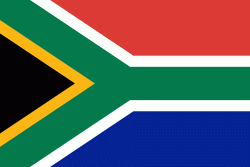City of Johannesburg Metropolitan Municipality (City of Johannesburg Metropolitan Municipality)
 |
Johannesburg is a divided city: the poor mostly live in the southern suburbs or on the peripheries of the far north, and the middle- and upper class live largely in the suburbs of the central and north. As of 2012, unemployment is near 25% and most young people are out of work. Around 20% of the city lives in abject poverty in informal settlements that lack proper roads, electricity, or any other kind of direct municipal service. Another 40% live in inadequate housing with insufficient municipal housing.
Following the end of the apartheid era, in April 1991 the Central Witwatersrand Metropolitan Chamber was formed as a "people-based" negotiating forum prior to holding a democratic election and the formation of a new administration for the Johannesburg area. Following the 1993 "Local Government Transition Act", the Greater Johannesburg Negotiating Forum was created, and this forum in September 1994 reached an agreement which entailed regrouping the suburbs into new municipal structures, the metropolitan local councils (MLCs), and the overarching Greater Johannesburg Metropolitan Council, also known as the "Transitional Metropolitan Council" for the city.
The government of Johannesburg's metropolitan area evolved over a seven-year period from 1993, when no metropolitan government existed under apartheid, to the establishment in December 2000 of today's Metropolitan Municipality. An "interim phase" commenced with the 1993 Constitution. This saw the establishment at the metropolitan level of the Transitional Metropolitan Council (TMC) and several urban-level councils under and neighbouring the TMC. In February 1997 the final constitution replaced the interim constitution and its transitional councils with the final system of local government which defined the current category A, B and C municipalities. Today's City of Johannesburg Metropolitan Municipality was created accordingly as a category A municipality, giving it exclusive executive and legislative power over its area.
Map - City of Johannesburg Metropolitan Municipality (City of Johannesburg Metropolitan Municipality)
Map
Country - South_Africa
 |
 |
| Flag of South Africa | |
About 80% of the population are Black South Africans. The remaining population consists of Africa's largest communities of European (White South Africans), Asian (Indian South Africans and Chinese South Africans), and multiracial (Coloured South Africans) ancestry. South Africa is a multiethnic society encompassing a wide variety of cultures, languages, and religions. Its pluralistic makeup is reflected in the constitution's recognition of 11 official languages, the fourth-highest number in the world. According to the 2011 census, the two most spoken first languages are Zulu (22.7%) and Xhosa (16.0%). The two next ones are of European origin: Afrikaans (13.5%) developed from Dutch and serves as the first language of most Coloured and White South Africans; English (9.6%) reflects the legacy of British colonialism and is commonly used in public and commercial life.
Currency / Language
| ISO | Currency | Symbol | Significant figures |
|---|---|---|---|
| ZAR | South African rand | Rs | 2 |
| ISO | Language |
|---|---|
| AF | Afrikaans language |
| EN | English language |
| ST | Sotho language |
| SS | Swati language |
| TS | Tsonga language |
| TN | Tswana language |
| VE | Venda language |
| XH | Xhosa language |
| ZU | Zulu language |















